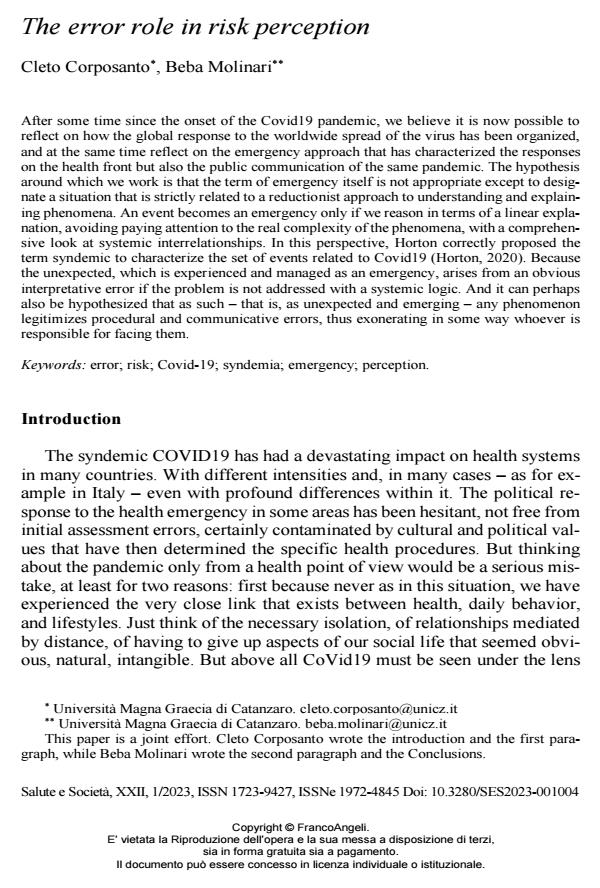The error role in risk perception
Journal title SALUTE E SOCIETÀ
Author/s Cleto Corposanto, Beba Molinari
Publishing Year 2023 Issue 2023/1
Language English Pages 13 P. 45-57 File size 397 KB
DOI 10.3280/SES2023-001004
DOI is like a bar code for intellectual property: to have more infomation
click here
Below, you can see the article first page
If you want to buy this article in PDF format, you can do it, following the instructions to buy download credits

FrancoAngeli is member of Publishers International Linking Association, Inc (PILA), a not-for-profit association which run the CrossRef service enabling links to and from online scholarly content.
After some time since the onset of the Covid19 pandemic, we believe it is now possible to reflect on how the global response to the worldwide spread of the virus has been organized, and at the same time reflect on the emergency approach that has characterized the responses on the health front but also the public communication of the same pandemic. The hypothesis around which we work is that the term of emergency itself is not appropriate except to designate a sit-uation that is strictly related to a reductionist approach to understanding and explaining phenomena. An event becomes an emergency only if we reason in terms of a linear explanation, avoiding paying attention to the real complexity of the phenomena, with a comprehensive look at systemic interrelationships. In this perspective, Horton correctly proposed the term syndemic to characterize the set of events related to Covid19 (Horton, 2020). Because the unexpected, which is experienced and managed as an emergency, arises from an obvious interpretative error if the problem is not addressed with a systemic logic. And it can perhaps also be hypothe-sized that as such - that is, as unexpected and emerging - any phenomenon legitimizes proce-dural and communicative errors, thus exonerating in some way whoever is responsible for facing them.
Keywords: error; risk; Covid-19; syndemia; emergency; perception.
Cleto Corposanto, Beba Molinari, The error role in risk perception in "SALUTE E SOCIETÀ" 1/2023, pp 45-57, DOI: 10.3280/SES2023-001004